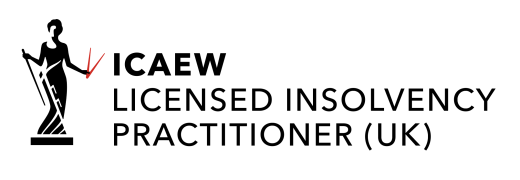Falling behind on corporation tax can feel overwhelming. Letters arrive, interest starts to build, and it’s not always clear what HMRC will do next or how to get breathing space. You’re not alone, and there are structured routes to a practical solution.
In this guide we explain exactly how corporation tax arrears work, the interest and penalties you can expect, how a Time to Pay arrangement is agreed, and the steps HMRC typically follows when enforcing a debt. You’ll find plain-English definitions, worked examples and clear actions you can take today. At Anderson Brookes, we’re here to help you stabilise the position and move forward with confidence.

Quick Definitions
Corporation tax arrears
Unpaid corporation tax from a past accounting period. Interest is charged daily until cleared, and HMRC may apply penalties or begin enforcement if the debt remains outstanding.
Penalties
Fixed penalties for late filing of the CT600 and tax-geared penalties if filing is more than 6 or 12 months late. Interest is separate from penalties. They can accrue if you do not manage HMRC debts properly.
Late payment interest
An HMRC charge that accrues daily on overdue corporation tax. The rate moves with the Bank of England base rate and is applied from the day after the due date until the debt is settled in full.
Company Tax Return (CT600) vs payment
Your CT600 is the form that reports profits and calculates the corporation tax due. Payment is separate. You can file on time yet still owe tax, or pay on time but file late. HMRC treats late filing and late payment differently.
Time to Pay (TTP)
An arrangement with HMRC to clear corporation tax arrears in affordable monthly instalments. To be accepted, you usually need up-to-date returns, a realistic proposal and evidence that the plan is affordable.
Enforcement
If arrears persist without engagement, HMRC can escalate collection. This may include a Notice of Enforcement and an in-person visit to take control of goods, among other powers.
Due Dates for Corporation Tax and Returns
One of the simplest ways to avoid corporation tax arrears is to stay on top of due dates. Knowing just two key dates removes a lot of uncertainty.
Payment Due Dates
For most companies, corporation tax must be paid 9 months and 1 day after the end of your accounting period. For example, an accounting period ending 31 March means payment is due on 1 January. HMRC confirms this timing in its internal manual and public guidance.
Return Due Dates
Your Company Tax Return (CT600) is due 12 months after the end of the same accounting period. The payment and filing deadlines are separate, so it’s possible to pay on time but file late, or file on time but pay late. See HMRC’s step-by-step page on the deadline for your Company Tax Return for the official wording.
Dates for Larger Companies Paying by Instalments
If your profits exceed the “upper limit” for the period, you may be classed as large and pay Corporation Tax by quarterly instalments. The first instalment can fall before the period ends, so early forecasting is essential. HMRC’s guidance for paying corporation tax as a large company gives you advice on instalment payments.
Late-Payment Interest
HMRC charges daily late payment interest on corporation tax arrears from the day after the due date until the balance is cleared. It’s simple interest, not compound, so you are charged on the unpaid tax only.
The interest rates charged move in line with Bank of England changes. The headline rates at present (from 27 August 2025) are:
- 8.00% late payment interest rate
- 3.00% repayment interest rate
In April 2025 HMRC changed its calculation to base rate +4% for late payment interest, which temporarily lifted the rate to 8.5% before later reductions as the base rate fell. Repayment interest is set at the base rate -1%.
Interest stops on any amount you pay, from the date HMRC receives it. If you clear part of the debt, interest continues only on the balance until that is settled.
Example Calculation
HMRC uses a straightforward formula:
Interest = Tax due × annual rate ÷ 365 × number of days late
Example: £20,000 paid 45 days late at 8.00% → £20,000 × 0.08 ÷ 365 × 45 = £197.26.
Tip: If you cannot clear everything at once, making an immediate part-payment reduces ongoing interest while you prepare a Time to Pay proposal. Some businesses also use payments on account to stop interest building while a figure is being finalised.
Closing a Limited Company with Debts?
Fast and Stress-Free Solutions.
Start closing your limited company today. Placed into liquidation within 8 days. We fully understand that timing is critical.
Worried about your Bounce Back Loan?
Need to close your limited company? Speak to an expert who’s helped thousands do the same – even with company debts or creditor pressure.
Stop Creditor Pressure
Getting constant calls from creditors? Closing your company through liquidation can give you the relief to move forward.
Directors: Avoid Risks When Winding Up Your Company
We guide you, simply, honestly. Let us handle everything.
Company Tax Return (CT600) Late Filing Penalties
If your CT600 is late, HMRC applies fixed penalties, followed by tax-geared penalties if the delay continues.
A fixed penalty of £100 applies if your Company Tax Return is late by 1 day. If you fail to return your CT600 3 months after your deadline, another £100 penalty will be added.
Note: The £100 penalties increase to £500 if you submit your tax return late three times in a row.
After this point, additional penalties will be based on the amount of Corporation Tax HMRC thinks you owe. If your return is 6 months late, the penalty will be 10% of your estimated Corporation Tax bill. An extra 10% will be added if you’re late by 12 months.
You can appeal a late filing penalty if you had a reasonable excuse, but HMRC will expect you to file the return before appealing.
There is no separate late-payment penalty for Corporation Tax in most cases. Interest is charged on late payment, and penalties relate to filing failures or inaccuracies. HMRC also outlines penalties for inaccurate returns and record-keeping failures in its guidance.
Tip: HMRC is far more open to a Time to Pay discussion when your returns are up to date. Gather proof of affordability early, and check to ensure that your company is not in any PAYE or NIC arrears.
Escalation Timeline: What HMRC Does Next

Step 1: Reminders and Demands
If payment is missed, HMRC issues reminders and formal demands. Where contact is ignored or breaks down, cases are passed to Debt Management for enforcement.
Step 2: Notice of Enforcement
Before an in-person visit, an enforcement agent must send a Notice of Enforcement giving you at least 7 clear days’ warning, not counting Sundays, bank holidays, Good Friday or Christmas Day. This timing comes from the Taking Control of Goods Regulations.
Step 3: Visit and Taking Control of Goods
After the notice period, an HMRC Field Force officer can attend your trading address to take control of goods. They will list items that could be removed and issue inventory documents on site. HMRC uses the post-2014 Taking Control of Goods process in England and Wales.
Step 4: Controlled Goods Agreement (CGA)
Where possible, HMRC prefers to agree a Controlled Goods Agreement. This lets you keep using listed assets while you make agreed payments, provided you do not dispose of them. The CGA must be in writing and signed by you or someone with apparent authority at the premises.
Step 5: If You Break the CGA or Do Not Pay
HMRC can remove and sell controlled goods. You must receive a notice of sale at least 7 clear days before the auction date. In limited circumstances, enforcement agents may re-enter by force where a valid CGA exists and payments have not been kept.
Step 6: Court Action If Arrears Persist
If enforcement does not resolve the debt, HMRC may petition the court to wind up the company. This is a formal step that can quickly freeze the business and its bank accounts.
Tip: Preparation reduces risk and stress. Our HMRC enforcement visit checklist walks you through ID checks, documents to have ready, and how to handle a CGA discussion on the day.
Sectors We Support
We support company directors in every sector, from construction firms and logistics companies to pubs, cafés, restaurants, hotels, retailers and manufacturers. Our advice is always clear, confidential and shaped by real experience in your industry. Whether you’re dealing with unpaid tax, supplier pressure or falling income, our team understands the challenges and will guide you through the best next steps.
Securing a Time to Pay (TTP) Agreement
What HMRC Looks For
Time to Pay is simply an agreed instalment plan to clear corporation tax arrears over time. HMRC usually wants filed returns, early contact, and a proposal you can afford without missing future liabilities. Their public guidance confirms you should contact them as soon as you realise you cannot pay and be ready to discuss terms.
Who to Call and When
If you have missed your Corporation Tax payment deadline, call HMRC’s payment problems line on 0300 200 3840 during opening hours. This is the correct route to discuss a payment plan and prevent rapid escalation.
Strengthen Your Case
Successful proposals are specific and evidenced. Expect to provide a short cash flow, bank statements, recent management accounts and details of any cost cuts or new finance. Preparing a 12-week cash flow and supporting documents in advance makes the call far easier. Our Time to Pay evidence checklist sets out exactly what to gather and how to present it.
Terms and Duration
HMRC will weigh affordability, compliance history and why the arrears arose. There is no fixed maximum length, but shorter, affordable plans are more likely to be accepted. You may be asked to make an upfront payment and to keep all future returns and payments up to date while the plan runs. HMRC’s guidance explains that arrangements are tailored to circumstances and can cover different taxes.
Staying on Track
Make payments by the agreed dates and file returns on time. If circumstances change, contact HMRC before a payment is missed. Breaking a plan can trigger renewed enforcement activity. HMRC’s manuals and notices show how quickly cases can move from missed payments to enforcement once contact lapses.
Part-Payments
Even a part-payment reduces ongoing interest from the day HMRC receives it, and it shows good faith while terms are finalised. If you are close to, or inside, the enforcement window, call first, pay what you can, then finalise the evidence pack.
Protecting Your Business if TTP Isn't Viable

Sometimes a sustainable plan is not possible. Cash flow may not recover, creditors may be unwilling to wait, or liabilities might already exceed assets. In these situations, it is sensible to look at formal insolvency options that protect creditors fairly and help you draw a line under the company’s debts.
When to Consider a Creditor’s Voluntary Liquidation (CVL)
A CVL is a director-led process to close an insolvent company in an orderly way. A licensed insolvency practitioner is appointed as liquidator. They realise assets, distribute funds to creditors, and handle the statutory reporting. CVL is usually considered when the company cannot pay its debts as they fall due and there is no realistic route back to solvency.
What Happens to Directors
The liquidator must file a conduct report, but most directors who have acted reasonably and kept proper records continue without restriction. Personal guarantees still stand, and overdrawn director loan accounts may need to be repaid. If you have concerns about guarantees or record-keeping, take advice early. You can learn more in our guide covering what happens to directors after a CVL.
Check out our CVL timeline article for more information.
Free Confidential Advice & Quote


Frequently Asked Questions
Can I stop late-payment interest from building?
You stop new interest by paying the arrears. Even a part-payment helps, because interest only applies to the remaining balance from the day HMRC receives your money.
Will HMRC agree a Time to Pay if I am already late?
Yes, if the proposal is affordable and your returns are filed. Have a short cash flow, bank statements and recent management accounts ready before you call.
How long will HMRC give me to pay?
There is no fixed length. The plan should clear the debt in a reasonable timeframe that you can actually afford. Smaller, realistic offers are more credible than optimistic ones that you are likely to miss.
What happens if I miss a Time to Pay instalment?
Contact HMRC before the due date if a payment is at risk. If an instalment is missed without agreement, HMRC can cancel the plan and restart enforcement.
Can HMRC take goods from my premises?
Yes, after sending a valid Notice of Enforcement and allowing the required notice period, an officer can visit to take control of goods. Many cases are handled by agreeing a Controlled Goods Agreement on the day.
Am I personally liable for corporation tax arrears?
Normally no, as the liability sits with the company. Personal guarantees to lenders, overdrawn director loan accounts in liquidation, or deliberate wrongdoing are exceptions that can create personal exposure. Take advice early if any of these apply. For advice in related contexts, read our guides to personal liability in a CVL and receiving a PLN for NIC.
Can I prioritise other debts ahead of corporation tax?
HMRC expects immediate engagement and fair treatment alongside other creditors. If you have competing pressures such as payroll or suppliers, our HMRC debt management guide explains how enforcement tends to progress and what balanced steps look like in practice.
Is it worth paying something now if I plan to request a TTP?
Yes. A part-payment reduces ongoing interest and shows willingness to resolve the debt, which can help your case when terms are discussed.
Will a winding up petition happen without warning?
Warning signs usually arrive first, such as demands and an enforcement notice. If the arrears remain unresolved, HMRC may escalate to a petition. Early action gives more options than reacting after service.
Your Next Steps: Protecting Your Business Now
What to Do in the Next 48 Hours
- Work out what is due. Note your accounting period end, payment deadline, and how many days late you are.
- File any outstanding returns. Penalties relate to filing, while interest relates to payment. Getting the CT600 in removes one barrier to a plan.
- Make a part-payment if you can. Even a small amount reduces interest from the day HMRC receives it and shows good intent.
- Prepare a short cash flow. Twelve weeks is ideal. Include expected receipts, priority outgoings and what you can pay monthly.
- Call HMRC to discuss a plan. Have your company details, UTR, current balance, and evidence to hand.
- If enforcement action is active, stay calm. Keep records visible, check ID carefully, and keep communication open.
- If a sustainable plan is unlikely, take regulated advice early. Acting sooner usually creates more options.
How We Help, Step By Step
Anderson Brookes’ licensed insolvency practitioners provide calm, regulated support from the first call. We weigh up your options, explain the implications in plain English, and guide you toward the most suitable route, whether that is a realistic Time to Pay proposal or a formal solution.
- We review your position and confirm deadlines, interest and penalties.
- We build an affordable proposal, with a clear cash flow and supporting evidence.
- We guide the call with HMRC and help manage any on-site enforcement contact.
- If rescue is not viable, we explain formal options clearly and handle the process from end to end.
Speak to Us Today
You don’t have to navigate corporation tax arrears alone. A short, confidential conversation with Anderson Brookes can put you back in control and help you to agree a way forward. Get in touch and we’ll help you to choose the right next step.


